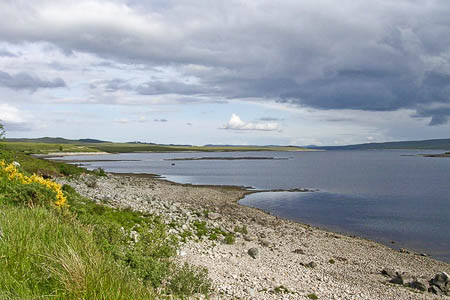A conservation charity has joined a mountaineering body in objecting to a proposed windfarm in one of Scotland’s most remote areas.
The John Muir Trust said the Sallachy windfarm in Assynt would be a ‘worrying development’ in an area of high-quality wild land.
The trust said the 125m-high turbines would be in an area identified by Scottish National Heritage as a search area for wild land. It estimates the turbines will be visible from up to 10 per cent of the Assynt and Coigach national scenic area, including from Conival and Ben More Assynt, the two munros in the NSA.
Last month Mountaineering Council of Scotland president Brian Linington appealed to its members to stand up and be counted in opposing the development.
John Hutchison, chairman of the John Muir Trust said: “This is a worrying proposal. Assynt and Coigach is an area of great beauty and spectacular natural landscapes that includes the summits of Quinag, Ben More Coigach and Suilven.
“Folk are becoming very concerned about the effect of this type of development on our wild landscape, the unique Scotland that visitors come to see. We can’t afford to lose high quality areas of wild land such as this, particularly when there are impacts on an established national scenic area.”
“We’ve been concerned for a while that as less sensitive available space is used up, Scotland’s wildest land will come under increased threat.
“The Sallachy proposal is a step closer to this happening.”
WKN Windkraft Nord has submitted an application to build the windfarm near Loch Shin, the largest loch in Sutherland.
It said it had chosen the site to take advantage of the strong wind resource found on the slopes above Loch Shin as well as the proximity to the existing Glencassley hydro power station and the supporting infrastructure.
The company said it had listened carefully to the views of the local community in preparing its environmental impact assessment.
Steven Turnbull, policy officer for the JMT said: “The developer in this case has recognised the wildness of the site but has significantly undervalued this quality.
“If Sallachy is approved it would set an unwelcome precedent for future developments. It would make it even more difficult in the future to challenge wind farms that impact on national scenic areas, the highest accolade for Scotland’s natural landscapes.”

Nick
03 July 2012I wrote an article "The Power of Wind Power" over a year ago pointing out the risk to wild places via wind farms.
Foreign firms are making a lot of money at the expense of the British tax payer and worse the wild areas of this country. Employment in the UK benefits very little from building these windfarms, as 97% of those involved are foreign and few if any local contractors benefit.
The government has given the green light for the building of wind farms and no where is safe. Wind farms are clearly out of control now and the time has come to for people to take a stand against the destruction going on in our wild places.